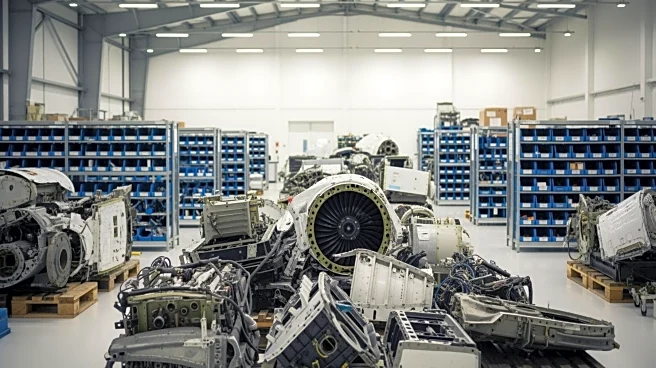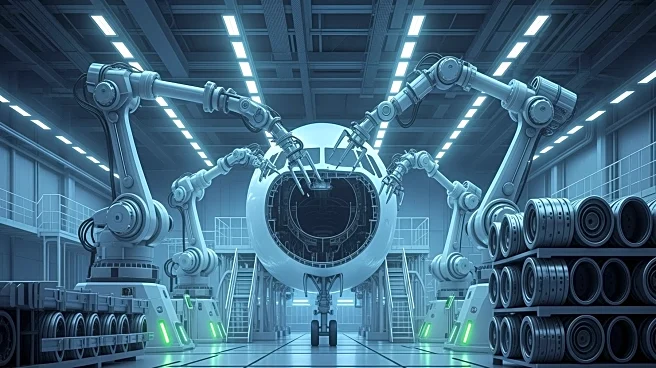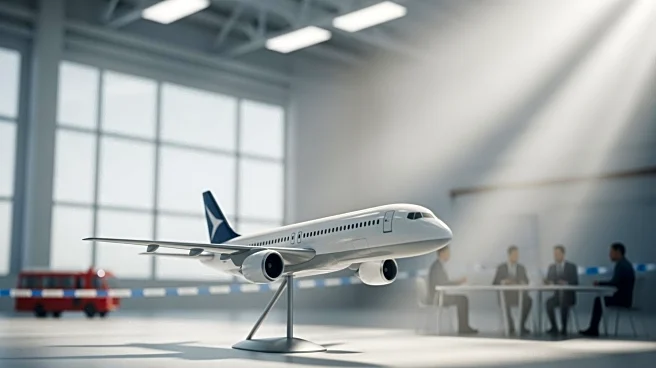What's Happening?
Major aircraft and engine manufacturers are adopting more proactive strategies to address ongoing supply chain challenges. These companies, traditionally reliant on passive tactics for aftermarket benefits,
are now actively engaging in the supply chain to meet the high demand for older aircraft parts. The shift is driven by persistent material shortages that have led to delays in new aircraft deliveries, falling short of both original equipment manufacturers' (OEMs) projections and customer expectations. Boeing, for instance, is increasing its involvement in used serviceable material (USM) to ensure a steady supply of high-demand spares. The company has also opened a new warehouse in Cologne, Germany, to improve turnaround times for European customers. Similarly, engine manufacturers like CFM International are enhancing their repair development efforts to meet the demand for both new and used parts.
Why It's Important?
The proactive shift by manufacturers is crucial in mitigating the impact of supply chain bottlenecks on the aviation industry. By increasing their involvement in the aftermarket, these companies aim to reduce the cost of ownership for operators and lessen the demand for new materials. This approach not only helps in managing current shortages but also supports the sustainability of older aircraft, which are being used more frequently due to delays in new aircraft deliveries. The increased focus on repairs and strategic positioning of spares is expected to provide operators with more cost-effective solutions, thereby enhancing their operational efficiency. However, the ongoing challenges highlight the need for an expanded pool of suppliers to meet the growing demand.
What's Next?
As manufacturers continue to adapt their strategies, the aviation industry may see the emergence of new suppliers to address capacity constraints. The focus on repair development and strategic inventory positioning is likely to persist, with companies investing in technologies that streamline repair processes and reduce turnaround times. Stakeholders, including airlines and maintenance providers, will need to collaborate closely with manufacturers to ensure a steady supply of parts and services. The industry may also witness increased investment in supply chain infrastructure to support these efforts.
Beyond the Headlines
The shift towards more active supply chain management by manufacturers could lead to long-term changes in the aviation industry's operational dynamics. By prioritizing repairs and used parts, companies are not only addressing immediate shortages but also contributing to a more sustainable and cost-effective aviation ecosystem. This approach may encourage further innovation in repair technologies and supply chain logistics, potentially setting new standards for the industry.












